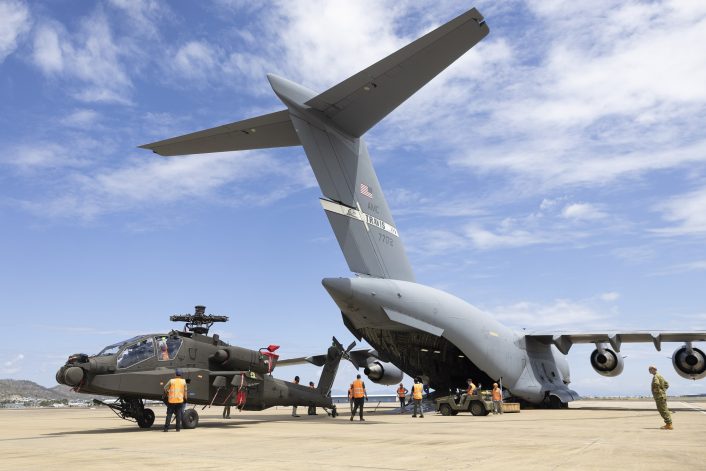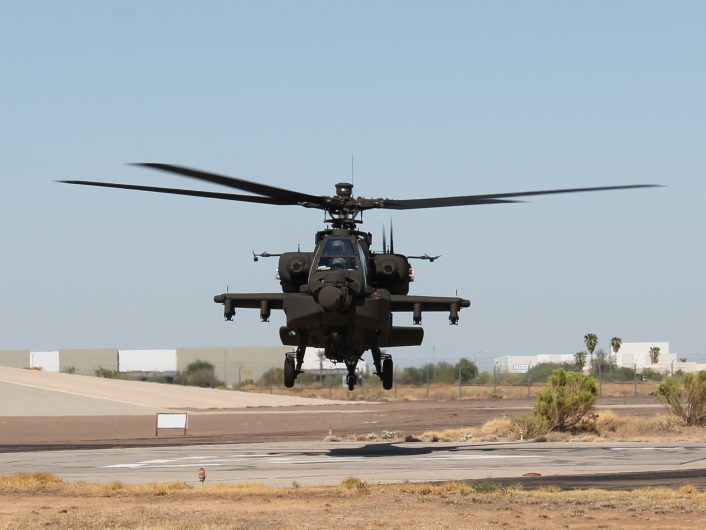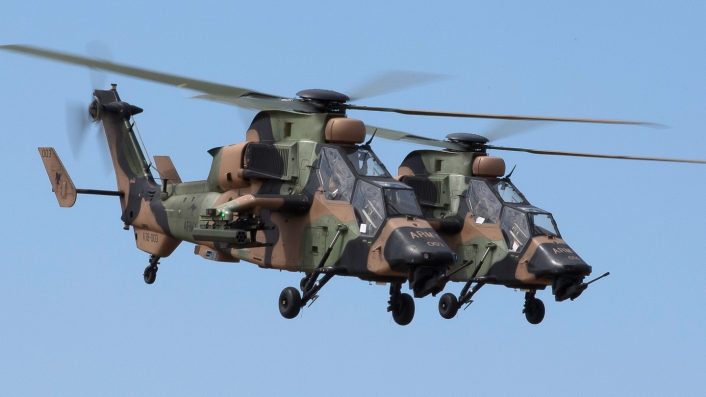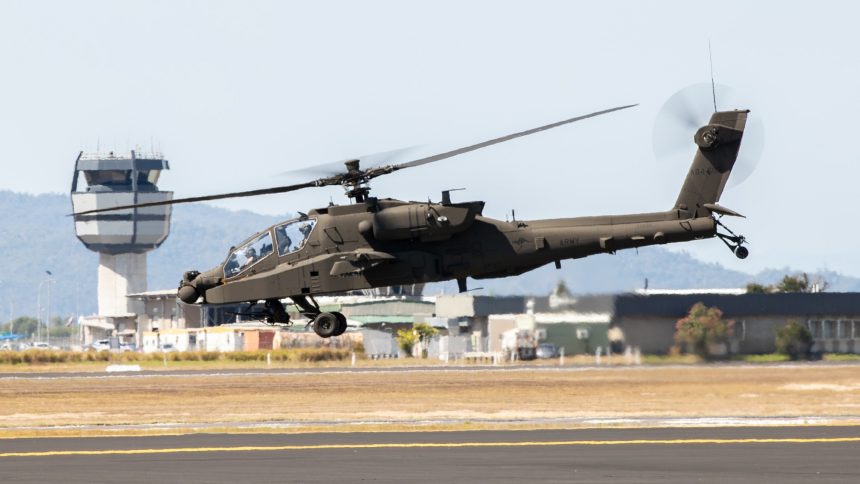The first two of 29 AH-64Es have arrived at RAAF Base Townsville, where they will be assigned to the 1st Aviation Regiment.
The first two new AH-64E Apache helicopters of the Australian Army have arrived at RAAF Base Townsville on Oct. 2, 2025. The helicopters are the first of 29 that Australia is acquiring through a 2021 Foreign Military Sale with the United States to replace the ageing Tiger fleet.
With this delivery, Australia becomes the 18th nation to field the Apache, of which 1,300 are operational worldwide. Two more helicopters will be delivered by the end of the year, says Boeing, with all Australian Apaches expected to be delivered by 2029.
Australia and Apache
Australia announced the AH-64E Apache acquisition in 2021, under its Armed Helicopter Reconnaissance Helicopter program initiated to replace the ageing Tigers. The Eurocopter Tiger Armed Reconnaissance Helicopter (ARH) has been in service in Australia since 2004, although it has long been afflicted by maintainability and sustainment issues.
The AH-64E was chosen as a proven, mature, and off-the-shelf capability, featuring a network-centric, fully integrated weapon system with crewed-uncrewed teaming capability. The U.S. State Department approved in June 2021 the FMS, worth $3.5 billion, which included the 29 helicopters, weapons and support, as well as Manned-Unmanned Teaming-2 (MUMTX) equipment.

“The AH-64E Apache provides a critical step change in attack aviation capability for the Australian Army and builds on the Albanese Government’s investments to improve the Australian Defence Force’s (ADF) ability to operate from Australia’s northern bases,” said the Deputy Prime Minister, Hon Richard Marles MP.
The Australian Defense Department says the Apache will provide critical aviation effects including reconnaissance, communications and networking, firepower and offensive support. The Minister for Defence Industry, Hon Pat Conroy MP, said “These new attack helicopters are critical to modernising the ADF and transforming the Army into a force optimised for littoral manoeuvre and long-range strike.
The Apaches will be assigned to the 1st Aviation Regiment, which currently operates the Tigers and is relocating to RAAF Base Townsville. Australian Army personnel have been undertaking training in the United States and the United Kingdom, with a number of air and ground crew already qualified on the Apache.
Australian Industry Participation
The Australian industry will have a participation in both the production and support of the Apache. Boeing, in fact, partnered with the Australian Government in 2023 and invested in local businesses as part of the deal, with the company highlighting that this is the first time Australian suppliers provide components for the Apache.

Australian companies Cablex and Thomas Global Systems will manufacture cabling, and design and manufacture cockpit avionics components, respectively, for the global fleet of Apaches. Specifically for the Australian Apaches, four companies – Cablex, Ferra, Axiom Precision Manufacturing and Mincham – were selected to supply wire harnesses, electrical panels, vertical spar box, machined parts, fairings and composites.
“By partnering with the Australian government and investing in local businesses including small-and-medium enterprises, this agreement will help create jobs, develop Australia’s aerospace and manufacturing capability, and grow the local economy,” said Kathleen Jolivette, vice president and general manager of Boeing Vertical Lift, when the agreement was signed in 2023 at the Avalon 2023 Australian International Airshow.
Boeing Defence Australia has also been awarded a seven-year Apache Initial Support Contract to sustain Australia’s Apaches. The contract covers maintenance, engineering, aircrew and maintainer training, and logistics, supporting the targeted Initial Operational Capability in late 2026.
“We have an unmatched sovereign platform sustainment capability that has enhanced multiple Foreign Military Sale platforms for the Australian Defence Force, and we’ll adopt that proven approach on Australia’s Apache program,” said Scott Carpendale, BDA’s vice president and managing director, when the contract was awarded in 2024. “Together with our local parts suppliers, this contract will bolster Australia’s defence industry and deliver a dependable new frontline capability in Australia, for Australians.”
The Defense Department adds that it is establishing the Townsville Aviation Training Academy, which will deliver technical courses to train new industry maintenance personnel for the AH-64E Apache and CH-47F Chinook helicopter fleets. The Albanese Government is also investing $700 million to provide essential infrastructure upgrades at RAAF Base Townsville to support the introduction of the Apache fleet, as well as the relocation of the 1st Aviation Regiment and 16th Aviation Brigade Headquarters.

Tiger’s Retirement
The Australian Army is currently evaluating how to dispose of its fleet of Eurocopter (now Airbus) Tiger ARHs. Among the possible options are the sale of the entire helicopter to another country or the sale of the parts to militaries that still operate the platform, according to Aviation Week.
The Tiger has been in service with the Australian Army since 2004 and is planned to be withdrawn by 2027/2028. The fleet has been plagued by technical and sustainment issues, with the 2016 Australian Defence White Paper first announcing the replacement by the mid-2020s.
In 2024, the Australian Army revealed to the Senate Estimates committee there is a “three-stage plan” to complete the Tiger’s retirement and the transition to the AH-64 Apache Echo. The Tiger fleet will see a progressive withdrawal as personnel, air crew and maintenance transitions to the Apache.
The chief of the Australian Army’s Aviation Command, Maj. Gen. David Hafner, acknowledged that the Tiger was an important step for the Australian Army Aviation, greatly increasing its experience with operating attack helicopters. By 2024, the Australian Tigers flew 2,997 hours.









